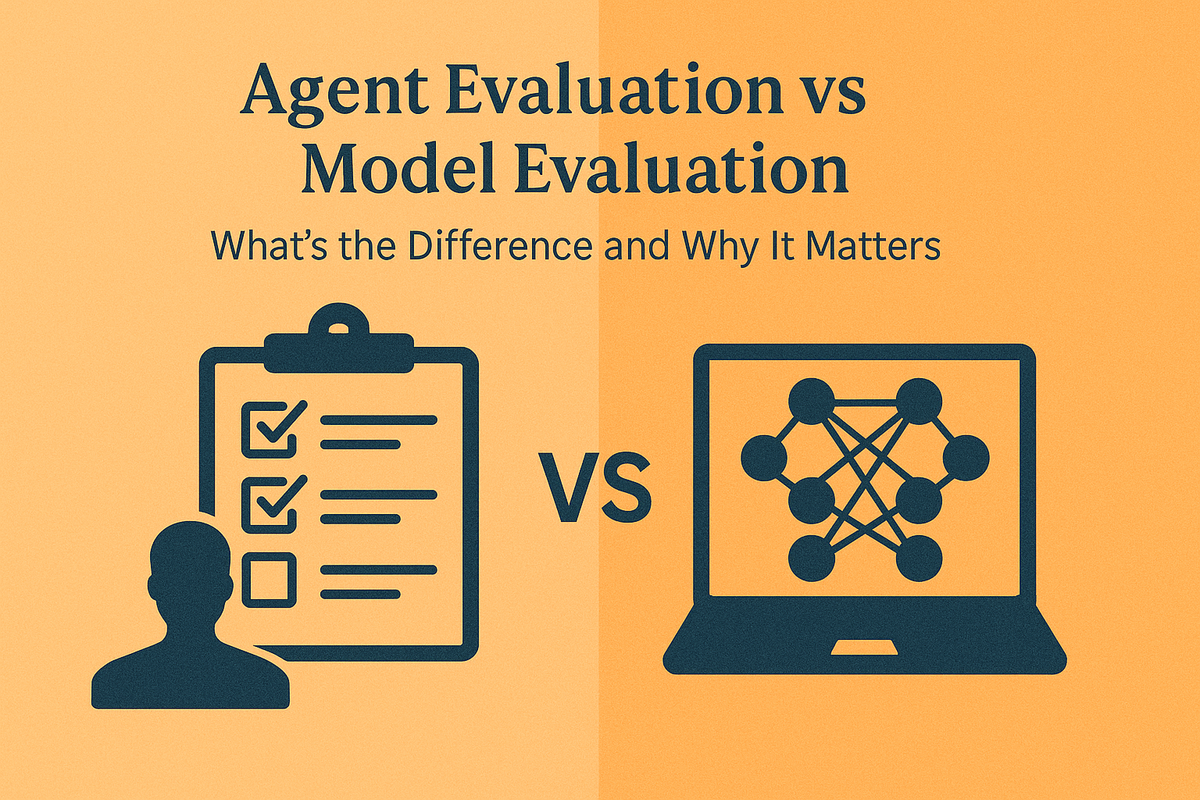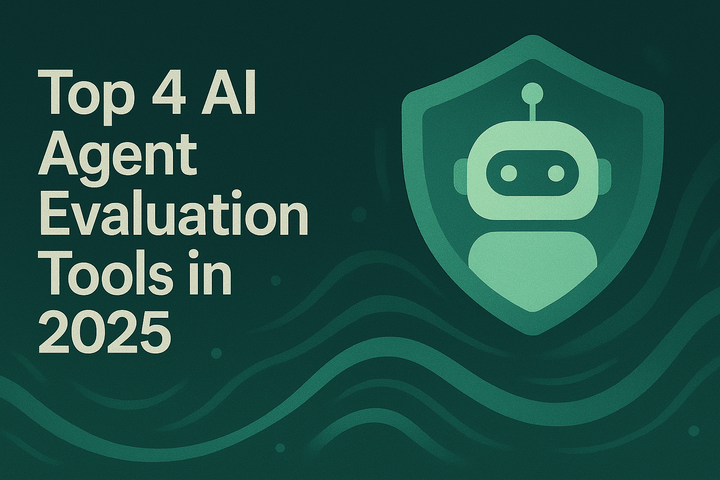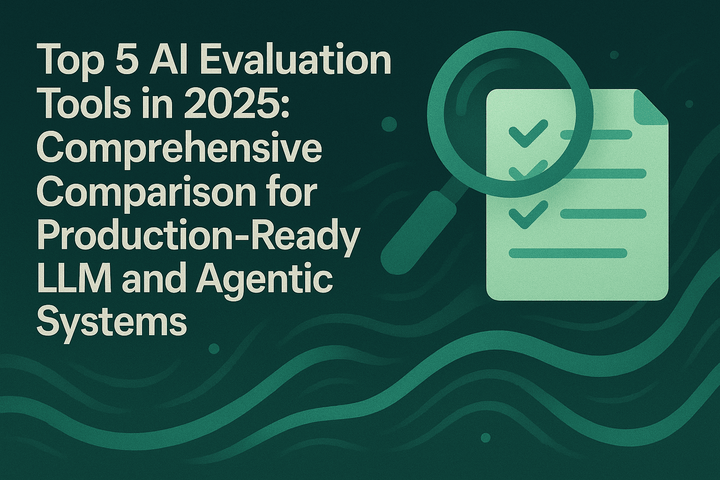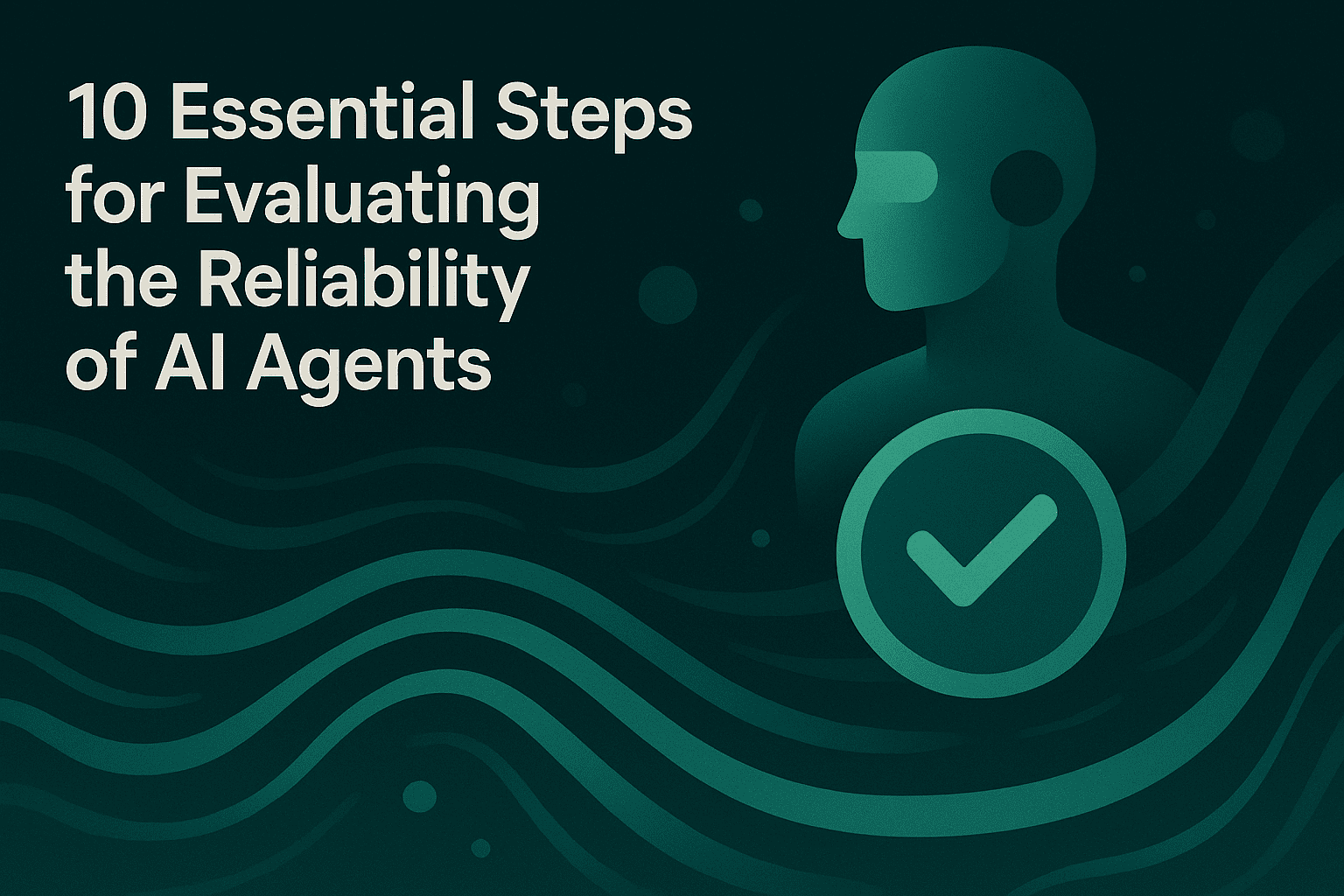Agent Evaluation vs Model Evaluation: What’s the Difference and Why It Matters

Introduction
As artificial intelligence systems become more complex and increasingly agentic, the distinction between model evaluation and agent evaluation has become both critical and nuanced. While the evaluation of underlying models (such as large language models, LLMs) remains foundational, the rise of AI agents (autonomous entities capable of multi-step reasoning, tool usage, and interacting with diverse environments) demands a new paradigm for assessment. Understanding the differences between these two forms of evaluation is essential for AI teams aiming to deploy reliable, high-quality AI systems at scale.
In this blog, we’ll explore the definitions, methodologies, and practical implications of agent and model evaluation, highlight why this distinction matters, and demonstrate how leading platforms like Maxim AI enable robust, scalable evaluation workflows. We’ll link to authoritative resources, Maxim documentation, and case studies throughout, ensuring a comprehensive, actionable guide for practitioners and decision-makers.
Table of Contents
- Defining Model Evaluation
- Defining Agent Evaluation
- Why Agent Evaluation Is Different and Harder
- Key Metrics: Model vs Agent
- Evaluation Workflows: From Benchmarks to Real-World Scenarios
- Challenges in Agent Evaluation
- Best Practices for Agent Evaluation
- How Maxim AI Powers Agent Evaluation
- Case Studies: Real-World Impact
- Further Reading & Resources
- Conclusion
Defining Model Evaluation
Model evaluation traditionally refers to the assessment of an AI model’s performance on standardized tasks and datasets. For LLMs, this typically involves metrics such as accuracy, BLEU scores, perplexity, and F1 scores, measured over large test suites.
- Purpose: To benchmark the raw capabilities of a model, language understanding, generation, reasoning, etc.
- Methodology: Static datasets, well-defined tasks (e.g., question answering, summarization), quantitative metrics.
- Limitations: Often fails to capture real-world complexity, context, and multi-step reasoning.
Resources
- Stanford HELM: Holistic Evaluation of Language Models
- OpenAI GPT-4 Technical Report
- Maxim AI Blog: AI Agent Quality Evaluation
Defining Agent Evaluation
Agent evaluation goes beyond the model and assesses the behavior of autonomous agents in dynamic, often open-ended environments. Agents may use multiple models, tools, APIs, and memory to achieve complex goals.
- Purpose: To measure the end-to-end effectiveness, reliability, and safety of agents as they operate in real scenarios.
- Methodology: Scenario-based testing, simulation of multi-turn interactions, integration with external tools, and analysis of agent workflows.
- Scope: Includes not just language generation, but decision-making, tool usage, error handling, and adaptability.
Key Features of Agent Evaluation
- Multi-turn Interactions: Agents are evaluated on their ability to maintain context and make decisions across multiple steps.
- Tool Calls and API Integrations: Assessment of how agents interact with external resources.
- User Personas and Scenarios: Testing agents against varied user profiles and environments.
- Longitudinal Performance: Monitoring agent quality over time and across deployments.
For a deep dive, see Maxim AI’s Agent Simulation & Evaluation.
Why Agent Evaluation Is Different and Harder
Evaluating agents introduces several layers of complexity not present in model evaluation:
- Dynamic Context: Agents operate in environments with evolving state and context.
- Decision Chains: The quality of an agent’s actions depends on sequential reasoning and planning.
- Real-World Uncertainty: Agents must handle unexpected input, ambiguous instructions, and edge cases.
- Tool Usage: Many agents utilize external APIs, databases, or applications, increasing the surface area for errors.
As highlighted in Maxim AI’s blog on evaluation workflows, traditional model benchmarks are insufficient for capturing these dimensions.
Key Metrics: Model vs Agent
| Metric | Model Evaluation | Agent Evaluation |
|---|---|---|
| Accuracy | Yes | Yes |
| BLEU/F1/Perplexity | Yes | Sometimes (for sub-tasks) |
| Multi-turn Consistency | Limited | Critical |
| Tool Usage Success | N/A | Critical |
| Scenario Coverage | Limited | Extensive |
| Error Recovery | N/A | Essential |
| Safety/Fairness | Yes | Yes, but context-dependent |
| Latency/Cost | Sometimes | Often critical |
| Human-in-the-Loop | Rare | Common (especially for subjective) |
For a comprehensive list of agent evaluation metrics, refer to Maxim AI’s guide.
Evaluation Workflows: From Benchmarks to Real-World Scenarios
Model Evaluation Workflow
- Select benchmark dataset (e.g., SQuAD, GLUE)
- Run model inference
- Collect quantitative metrics
- Compare against baselines
Agent Evaluation Workflow
- Define user personas and scenarios
- Simulate multi-turn interactions (see Maxim’s simulation platform)
- Integrate tool calls and context sources
- Monitor agent traces, decision chains, and outputs
- Evaluate using custom and prebuilt metrics
- Incorporate human reviews for subjective tasks
- Analyze longitudinal performance in production
Key Difference: Agent evaluation is scenario-driven, iterative, and often requires both automated and human-in-the-loop components.
Challenges in Agent Evaluation
1. Scenario Complexity
Agents must be tested across a wide range of real-world scenarios, including edge cases and adversarial inputs. Synthetic datasets and scenario generators are crucial for robust coverage.
2. Tool and API Integration
Agents often rely on external tools, making it essential to monitor tool call success rates, error handling, and latency. Maxim AI’s observability platform offers granular tracing for these workflows.
3. Multi-agent Interactions
In systems where multiple agents interact (e.g., collaborative agents, negotiation), evaluation must capture emergent behaviors and coordination.
4. Human Judgment
Many agent tasks require subjective assessment, such as helpfulness, safety, or user satisfaction. Human-in-the-loop pipelines, as supported by Maxim AI, are critical.
5. Continuous Monitoring
Agents deployed in production must be monitored for regressions, failures, and evolving user needs. Real-time alerts and dashboards are essential for maintaining quality.
Best Practices for Agent Evaluation
- Scenario-Driven Testing: Design diverse, realistic scenarios reflecting target user personas and environments.
- Automated and Human Evaluation: Combine automated metrics with human reviews for holistic assessment.
- Observability and Tracing: Implement granular tracing to debug workflows and monitor agent behavior in production.
- Version Control and Experimentation: Systematically iterate on agent designs, prompts, and workflows using robust versioning tools.
- Continuous Feedback Loops: Deploy online evaluations and alerts to catch regressions and maintain quality.
- Integration with CI/CD: Embed evaluation pipelines into development workflows for rapid iteration.
For a detailed workflow, see Maxim AI’s documentation on evaluation and experimentation.
How Maxim AI Powers Agent Evaluation
Maxim AI offers an end-to-end platform for agent simulation, evaluation, and observability. Here’s how it addresses the challenges outlined above:
1. Simulation Engine
- Simulate multi-turn interactions across thousands of scenarios and personas.
- Tailor environments to specific user persona and goals.
- Scale testing rapidly with AI-powered scenario generation.
Explore Maxim’s simulation platform
2. Evaluation Suite
- Access pre-built and custom evaluators for agent quality, safety, and reliability.
- Visualize evaluation runs across versions and test suites.
- Use auto evals or human-in-the-loop reviews for last mile quality assurance
- Integrate automated pipelines with CI/CD workflows.
Learn more about Maxim’s evaluation tools
3. Observability
- Monitor agent traces, tool calls, and decision chains in real time.
- OTel compatible observability
- Set up customizable alerts for latency, cost, and evaluator scores.
- Export data for external analysis and reporting.
Read about Maxim’s observability features
4. Human-in-the-Loop Evaluation
- Streamline human reviews for subjective quality metrics.
- Flexible queues and annotation pipelines for internal and external reviewers.
5. Enterprise-Grade Security
- In-VPC deployment, SOC 2 Type II compliance, and role-based access controls.
- Real-time collaboration and priority support for teams.
See Maxim’s enterprise features
Case Studies: Real-World Impact
Clinc: Elevating Conversational Banking
Clinc leveraged Maxim AI to evaluate and monitor conversational agents in banking, enabling robust scenario coverage and real-time quality assurance.
Thoughtful: Building Smarter AI
Thoughtful used Maxim to simulate multi-turn interactions and integrate human-in-the-loop evaluation, ensuring agents delivered accurate and safe results.
Comm100: Shipping Exceptional AI Support
Comm100’s support agents were evaluated using Maxim’s observability and evaluation tools, leading to improved reliability and faster iteration cycles.
Further Reading & Resources
- Maxim AI Blog: AI Agent Quality Evaluation
- Maxim AI Blog: AI Agent Evaluation Metrics
- Maxim AI Blog: Evaluation Workflows for AI Agents
- Maxim AI Documentation
- HELM: Holistic Evaluation of Language Models
- OpenAI GPT-4 Technical Report
- The Importance of Human-in-the-Loop AI
- Agent Simulation and Evaluation Platform
- Agent Observability Platform
Conclusion
The shift from model-centric to agent-centric AI systems brings new challenges and opportunities for evaluation. While model evaluation remains essential for benchmarking core capabilities, agent evaluation is indispensable for ensuring real-world reliability, safety, and user satisfaction. Platforms like Maxim AI are at the forefront of this evolution, offering comprehensive tooling for simulation, evaluation, and observability, empowering teams to ship AI agents with confidence and speed.
By embracing robust agent evaluation workflows and leveraging the right tools, organizations can unlock the full potential of autonomous AI, delivering impactful, trustworthy solutions across industries.
For more insights, guides, and best practices, visit the Maxim AI Blog and Documentation.


